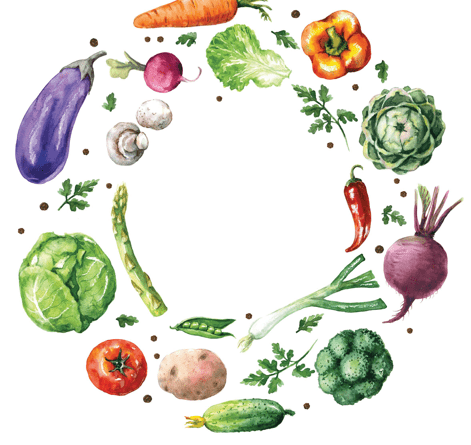How produce in your diet reduces risks and improves health.
Cold-weather cravings for warm, hearty foods are often satisfied with ingredients that sabotage health, such as refined flours and sugars or cheeses and meats high in saturated fats. Solution: Shift to plant-based cooking.
Working more fruits, vegetables, beans, grains and animal-free foods, like tofu, into daily meals and snacks does more than avoid unhealthy nutrients, says Alyssa Luning, RD, CSOWM, registered dietitian nutritionist and board-certified specialist in obesity and weight management, and part of Robert Wood Johnson University Hospital (RWJUH) Hamilton’s Community Education team.
“Plants are the only foods that contain fiber, a nutrient many Americans are deficient in,” Luning says. Getting fiber from produce staves off potential deficiency-related problems including high cholesterol, digestive problems and inflammation, which is linked to higher incidence of obesity, diabetes, heart disease and colorectal cancer.
“Plants also contain phytonutrients, including antioxidants such as beta-carotene, lycopene and anthocyanins,” Luning says. Phytonutrients combat inflammation and perform molecular cleanup that reduces toxins capable of triggering illness-related DNA mutations.
Power Plants
Don’t assume winter is a poor season for plant-based eating. “Foods may be out of season here, but in season in places like South America, where we get a lot of our fresh fruits and vegetables,” Luning says.
That’s especially true of brassica, or cruciferous, vegetables like broccoli, brussels sprouts, cabbage, cauliflower, collard greens and kale. “These are some of the most nutritious vegetables,” Luning says. “They have more antioxidant potential than a lot of other fresh plant foods.”
Try to eat different fruits and vegetables to maximize your nutrition, Luning advises. “Variety is huge,” she says. “When you transition to a plant-based diet, it can be harder to get enough protein, but you can do it if you eat a range of different beans, whole grains, nuts and seeds—including foods you may not have eaten before.”
If you still want protein-rich meat in your diet, Luning recommends choosing lean beef, turkey, chicken or seafood in easily digested portions about the size of your hand. “Even a small shift away from animal-based foods can improve health,” Luning says.
Top Tools For a Plant-Packed PantryOf course, you’ll want a good can opener for all those beans, lentils and sealed succulents. But registered dietitian nutritionist Alyssa Luning, RD, CSOWM, also recommends these plant-cooking staples for a well-stocked kitchen.
|
To join the complimentary Better Health Program at RWJUH Hamilton, call 609-584-5900.
